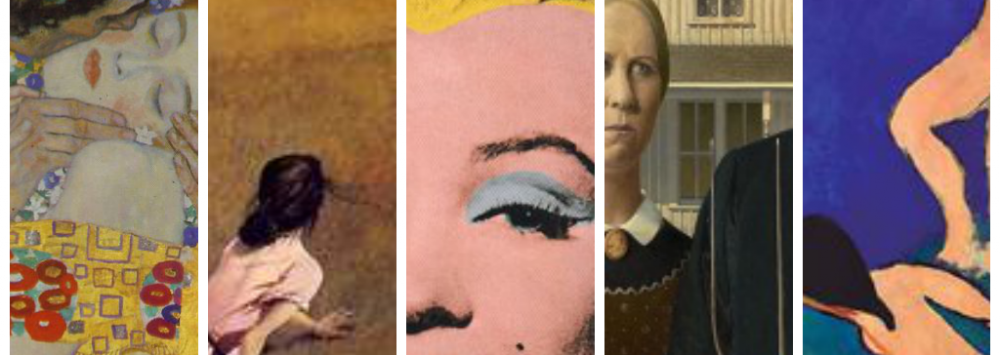Louise Nevelson
By Noah
Louise Nevelson was born Leah Berliowsky in Russia in 1899. Her father, Isaac Berliowsky left Russia for the United States in 1902, and she followed with her mother and two younger brothers in 1905. As a Jewish family in rural Maine, the Berlioswky’s were ostracized. In school, Louise spent much of her time learning English as her second language, as Yiddish was spoken at home. Both of Louise’s parents suffered from depression, perhaps because of their situation as immigrants struggling to find their niche in a new culture. As an outlet for her anxiety, Louise turned to art, experiencing it for her first time as a nine year old in the Rockland Public Library. Here, she saw a plaster cast of Joan of Arc, who’s legacy was quite similar to the one Nevelson would leave behind. Hoping to escape the monogamy of Maine, Louise left for New York, where she would graduate from high school in 1918 and live until her death in 1988. Aside from her sculpture, Nevelson is remembered for her embodiment of sexual liberation, marrying once at the ripe age of 20, divorcing two years later with a year old son, and never marrying again, while having a number of affairs, one being with Diego Rivera during his time with Frita Kahlo.
Dadaism
Considered by many as a movement sparked by anti World War I sentimentalism, Dadaism challenged convention. Many works of this movement rejected logic and reason and, since this movement was the first of its kind, it is considered a part of the larger 20th century avante garde movement. Perhaps what is most unique about the Dadaist movement aside from its theme is its geographic spread. With its roots in New York and Zurich, Swirzerland, Dadaism spread to Tokyo, Rome and Berlin, just to name a few. Considering the international effects of the First World War, it is no surprise that the message of babe Dadaists resonated from the East Hemisphere to the West. There was no defining artistic style of the Dadaist movement, as we saw in the video during class. It is widely understood that Dadaism laid the groundwork from Surrealism, which would take off in the mid 20th century.
Influences and Style
Nevelson studied and worked under her mentor, Hans Hoffman, with a few other colleagues. These colleagues were sculptors as well, only they all welded metal as their medium. To give her work an individual twist, Nevelson decided to use wood as her base. While Hoffman was quite influential to Nevelson, she once stated how deeply rooted Cubists ideals were in her work, noting Pablo Picasso and Henri Matisse as a couple points of reference. Nevelson has been seen as a foremother of the feminist movement for her individuality and sexual freedom, which she expresses in some of her work. Take, for example, Bride of the Black Moon (1955), in which she seems to represent her escape from matrimony. For the first 30 years of her artistic career, from 1929 until 1959, Nevelson spray painted all of her pieces black, following Hoffman’s lesson that using a limited color pallet would help her value simplicity. During the 1960′s, Nevelson’s style underwent a notable change as she shifted from black sculptures, gold and white ones which, in an interview, she claimed were inspired by her Roaring 20′s childhood, when she was told the streets would be paved with gold.
21st Century Comparison, Eleanor Antin

100 Boots Move On, Route 101 California. 1971

A Hot Afternoon. Last Days of Pompeii, 2001.

Hades. Helen’s Odyssey, 2007.
Eleanor Antin is an artist from New York who’s approach I find quite similar to Nevelson’s. Antin has used a variety of forms during her career, beginning with painting and eventually settling into photography and filmmaking. Her two most well known works are 100 boots (1971-1973) and Last Days of Pompeii (2002). Through humorous compositions like these, Antin pokes fun at real issues that many are too afraid to talk about such as economic disparity, the inevitable end, and sexuality. Something Nevelson and Antin share is a propensity for open exploration of sex. Though alive during two different peiriods, they are both representative of feminism,advocating for a non gender oriented society. Lastly, a similarity bewteen these two artists is that their works are, in some way, connected to their childhoods. While Nevelson attributes her baroque period of golds and whites to her oblivious years during the Roaring 20′s, Antin’s childhood obsession with Ancient Greece drove her to pursue Last Days in Pompeii.
Personal Reflection
Initially, I questioned Louise Nevelson’s character, thinking of her as materialistic. However, as I read more deeply into her, I learned that materialism was exactly what what she was trying to detach herself from. My respect for her embrace of sexual liberation is quite high, especially considering the society of which she was a part, one where liberation of a sexual nature was not nearly as accepted as it is today. Something I found particularly interesting in researching Nevelson was how similar she was to Joan of Arc, the brave, independent heroine, whose sculpture was the first artistic work Nevelson ever encountered. Lastly, one of my favorite aspects of Louse Nevelson as an artist is her method. I feel as though the relationship between a sculptor and their sculpture is among the deepest of all artistic connections, perhaps because of the unique hands on experience and the prolonged process.
Bibliography
Art 21. PBS, n.d. Web. 12 Apr. 2014. <http://www.pbs.org/art21/artists/
eleanor-antin>.
Ronald Feldman Fine Arts. Feldman Gallery, n.d. Web. 12 Apr. 2014. <http://www.feldmangallery.com/media/pdfs/Bios/antin_bio.pdf>.
Performa 13. New Visual Art Performance Biennial, n.d. Web. 12 Apr. 2014.
<http://13.performa-arts.org/event/eleanor-antin>.







